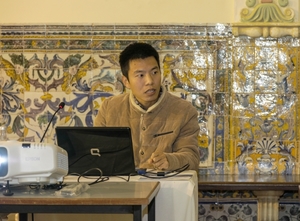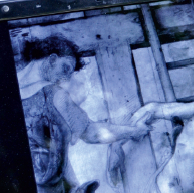
Doutoramento em Informática
Mapping in uncertain environments for mobile robots
Hongjun Li

Orientação: Miguel José Simões Barão & Luís Miguel Mendonça Rato
Oneofthefundamentalproblemsinroboticsisthelocalizationandmappingproblem,wherearobothasto localizeitselfwhilebuildingamapoftheenvironment. Severaltechniquesexisttotacklethisproblem. This work proposes novel mapping approaches with known robot poses for static and dynamic environments.
The proposed techniques are based on Markov random fields (MRFs) and Gaussian random fields (GRFs), followingaBayesianviewpointwherepriordistributionsareprovidedasregularizers. Instaticenvironments, every point is described by its occupancy probability. The first proposed method is an MRF-based filter, which focuses on the measurement noise and can be implemented online (realtime). The second one is an MRF-based prediction method, which can also be used to estimate the occupancy probability for unobserved space. In both methods, the maps are organized as a grid. Another approach, which works in continuous space, is based on a GRF prediction method, and a recursive algorithm is proposed to reduce the computational complexity.
In the case of dynamic environments, the occupancy probability is replaced by transition probabilities of a Markov chain that describe the dynamic behaviour of each point. Two methods for dynamic environments are proposed, also based on MRFs and GRFs. In the MRF-based method, all the parameters are jointly estimated. In contrast, in the GRF-based method, the parameters are divided into two subsets to reduce the computational complexity.
All the proposed methods are tested in simulations in the corresponding chapters. Finally, these algorithms are also validated on an experimental platform. In the experimental environments, robot poses cannot be measured precisely, and the uncertainty of robot poses is also considered.
Keywords: Markov random field, Gaussian random field, Mobile robotics, Mapping and localization




